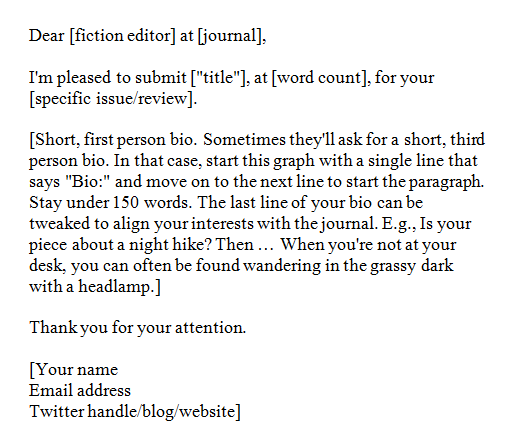"Not withdrawing your piece is unprofessional, rude, and amateurish behavior unbecoming of a writer."
I received a question about this strong statement from last week's post.
A reader asked:
"Any idea why [not withdrawing is unprofessional, etc.]? ...Sounds like writers lose a ton of negotiating power for no reason but that tradition has set social niceties in stone. Like... When you're interviewing for a job, [you ask] for a couple weeks to decide. Because if they call you and accept the day before your next interview instead of the day after, that shouldn't have such a disproportionate effect on your future.... Is there a similar waiting period for journal submissions?"The short answer is YES. Writers do have negotiating power.
If you get an offer, you're not required to answer immediately. This is true for querying agents, submitting directly to publishers or for subbing to literary journals.
What's the proper waiting period? A week is appropriate in all these cases. (There are a few exceptions, like weekly e-zines, where the turnover is too fast for a week's waiting period.)
Asking for one week gives you time to decide whether you will be satisfied having your work handled by the publishing professional in question.
In the meantime, it is appropriate and encouraged to send out "heads-up" emails -- not to every agent or editor you queried. Only send to those whom you might prefer.
The heads-up email:
- Explains you received an offer of publication/representation (no need to mention from whom)
- Invites a response to your submission by [deadline], after which time you will make a decision
Withdrawing your piece
Don't withdraw
In summary, when your work is on submission...
If you accept publication/representation and fail to loop in the other contenders, you are wasting their time. Reading through subs is a lot of work. If they read and accept yours, only to find it's been placed elsewhere, it's unlikely they'll want to reach out to you again.
~ Lora
- If you have sent a heads-up email, don't formally withdraw your piece. The ball is in their court. If they decline to respond, that's their business and they know the consequences of not doing so.
Do withdraw
- If you decide immediately to accept an offer, send a formal withdrawal note.
- If you did not send out a heads-up email, send a formal withdrawal note.
How to withdraw? A simple email will suffice. If using an online submission manager, add a quick note, like this one:
"Dear [editor/agent], Please withdraw [title] from your submission queue, as I have placed it elsewhere for [publication/representation]. Thank you."
In summary, when your work is on submission...
If you accept publication/representation and fail to loop in the other contenders, you are wasting their time. Reading through subs is a lot of work. If they read and accept yours, only to find it's been placed elsewhere, it's unlikely they'll want to reach out to you again.
Leaving an editor or agent out of the loop reflects poorly on you as a publishing team player.
This is the way the industry works. Yes, it may place the burden of effort disproportionately on writers. But until a new industry rises, er, out of the ashes, this is the game we've agreed to play.
***
What experiences have you had communicating your waiting periods and withdrawals to editors/agents? What kind of responses have you received from heads-up emails?
In your opinion, what might be a better way this system could work?
~ Lora
